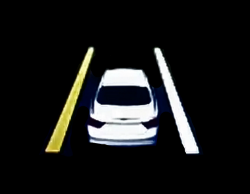
— Another study has concluded that lane departure warning systems do their job in preventing crashes that often lead to fatalities.
The research from the Insurance Institute for Highway Safety (IIHS) shows that blind spot detection and lane departure warning systems cut crash rates involving all types of injuries.
Researchers used police reports to conduct the study because those reports make it possible to look specifically at the types of crashes that particular technologies are designed to prevent.
To collect the information needed to crunch the numbers, IIHS used crash data from 2009-2015 involving vehicles made by General Motors, Honda, Mazda, Mercedes-Benz, Subaru and Volvo.
Recent results show lane departure warning systems lower rates of single-vehicle, sideswipe and head-on crashes of all severities by 11 percent and lowers the rate of injury crashes by 21 percent.
More good news when skipping driver demographics arrived when researchers found that lane departure warning systems cut fatal crash rates by 86 percent and the rate of all crashes was 18 percent lower.
IIHS researchers say the improvements are good, but the rates would likely be better if drivers didn't turn off their lane departure systems to avoid all the warning chimes and messages.
The study also points out how lane departure warning systems work, as in requiring that drivers actually respond to the warnings. IIHS looked at 631 crashes related to cars drifting out of their lanes and found that 34 percent of the drivers were physically incapacitated.
Although there is good news for the technologies, IIHS says it didn't see any direct benefits from lane departure warning systems in the form of lower insurance claim rates.
Researchers were curious about that fact and realized lane departure systems are typically bundled with "front crash prevention," making accurate data collection impossible because insurance data doesn't include what type of crash occurred. However, even on cars that have lane departure warning separate from all other features, no lower insurance claim rates were noticed.
With blind spot detection systems, all lane-change crashes were reduced by 14 percent and by 23 percent for lane-change crashes with injuries. But just as with lane departure warnings, much is left to the driver as the car won't automatically take action without driver input.
"Blind spot detection systems work by providing additional information to the driver. It's still up to the driver to pay attention to that information and use it to make decisions. That said, if every passenger vehicle on the road were equipped with blind spot detection as effective as the systems we studied, about 50,000 police-reported crashes a year could be prevented." - IIHS
The study from IIHS corresponds to a previous 2016 study when researchers from Carnegie Mellon University studied the effects of blind spot monitoring, lane departure warning and forward collision warning systems.
Carnegie researchers found those three features have the potential to stop or decrease the severity of 1.3 million crashes per year, including 133,000 that result in injuries and about 10,000 fatalities.




